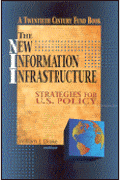We have reached a turning point in the history of communications and information. Over the next few years, the public and private sectors will make choices that will lead us rapidly down one of several paths. to the future. Along the way, a new matrix of government policies, market structures, and technological practices will be created that will, in turn, shape the development of the industry into the next millennium. At the same time, other paths that might have been feasible may be left behind and disappear from view.
It has happened before — the invention of the telegraph and development of electronic media — set new fundamental parameters of the industry’s structure and government policy alike. In response to such great technological achievements and advances, the federal government made decisions that effectively institutionalized new status quo in the communications industry. Now we have the opportunity to choose again, a new direction for a new set of media that will have far-reaching implications for American society. But which road should we take? And how do we evaluate the options?
The essays in this volume will take you well beyond the current issues and legislation in debate. They provide an essential look at new information for understanding issues as diverse as telecommunications deregulation, privacy protection, ownership concentration, and the struggle over content. The debate over the future of the nation’s information infrastructure will not end with passage of law in 1995. The public interest will most certainly build, business and industry lobbying efforts will continue to press Capital Hill, and our leaders of today will ardently debate about tomorrows policy issues.
Authors
